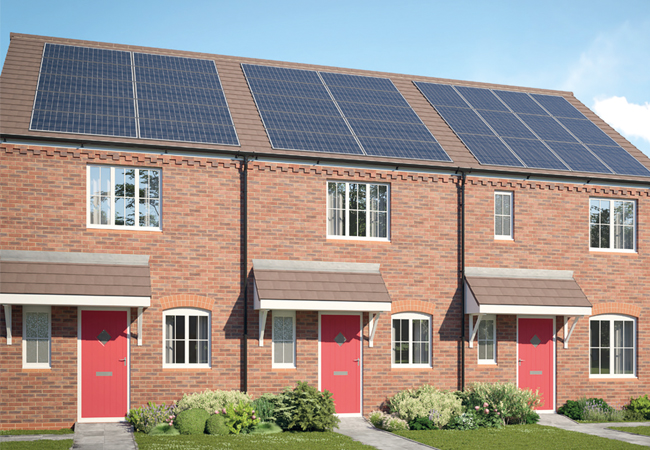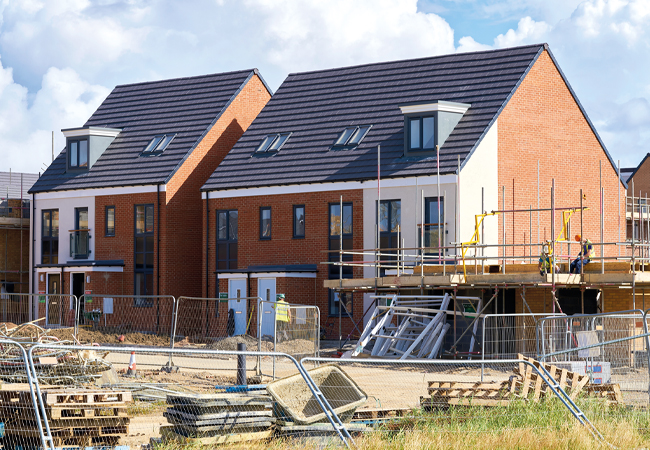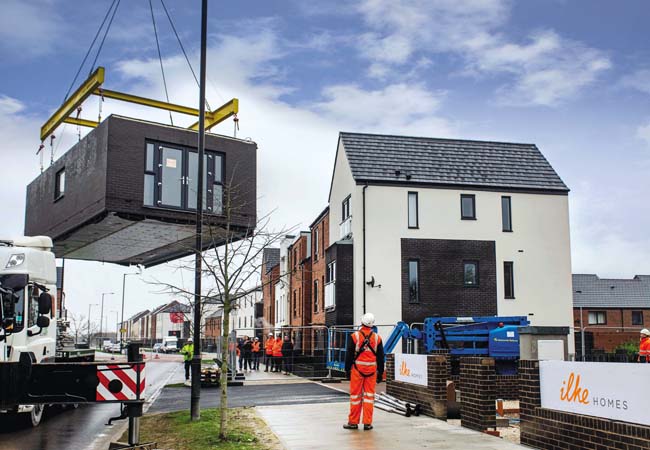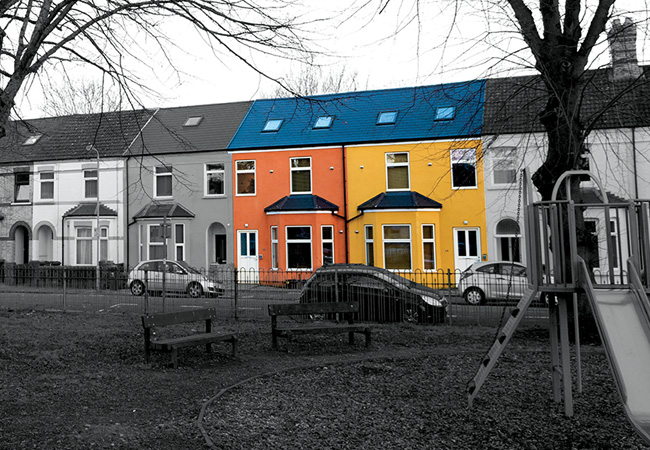
The global health emergency caused by the Covid-19 outbreak is leaving a trail of profound social, economic, and environmental effects that will be felt for years. Governments around the world adopted unprecedented measures to prevent the spread of the virus, including social distancing, stopping non-essential productive and social activities, and limiting the movement of people and goods.
Stay-at-home mandates have forced companies to embrace remote working, and this shift is likely to last even when the pandemic is over. Since the implementation of lockdown measures, many people are spending almost all of their time at home. Consequently, the quality of the indoor built environment is more important than ever for the health, wellbeing and productivity of its occupants.
In this context, Dr Farhang Tahmasebi and Professor Jian Kang, with their teams, report on two CIBSE-funded research projects addressing different aspects of post-pandemic indoor environmental quality (IEQ).
Indoor air quality and window operation
A team of researchers at University College London (UCL) Institute for Environmental Design and Engineering conducted a study – funded by an Engineering and Physical Sciences Research Council Impact Acceleration Account and CIBSE – to investigate if indoor air quality (IAQ) in residential buildings has deteriorated during the Covid-19 lockdown. The project took advantage of remote access to monitoring devices in eight occupied flats that had been part of an investigation before the coronavirus outbreak. This meant the team could assess the trajectory of IAQ and window-operation patterns by occupants before and after Covid-19.
Before the Covid-19 outbreak, in July 2019, the researchers conducted semi-structured interviews to establish a baseline for the occupants’ overall satisfaction with their dwellings, their general health and wellbeing, and sleep quality. The questions were asked again during the lockdown, to determine if there were any observable effects on participants’ behaviour, wellbeing and satisfaction with their dwellings.
Additionally, the study used a one-year long, five-minute resolution monitored dataset to reveal the impact of the lockdown on IAQ and patterns of opening and closing windows by occupants. This included indoor and outdoor air temperature, relative humidity, CO2, PM10 and PM2.5, along with occupancy state as detected by motion sensors and operation of windows captured by contact sensors.
The data analysis examined the impact of the lockdown at two scales: the first fortnight of lockdown has been compared with the fortnight before, to quantify the immediate impact of lockdown. Next, to get a broader understanding of the overall effect, a three-month period, mid-lockdown, has been compared with a three-month period in the previous year with similar weather conditions.
From seven completed questionnaires during the lockdown, all but one (a healthcare worker) reported an increase in the amount of time spent at home. Participants were typically at home on evenings and weekends before the lockdown, but reported being at home ‘most of the time’ during lockdown.
There was very little change in the reported incidence of cleaning or cooking during lockdown, and only one participant reported an increase in the use of candles and air fragrances. Three scored the overall comfort of their homes higher than before lockdown; one scored the overall comfort lower; and three had no change to their scores.
Overall sleep-quality scores and health status did not change significantly between the monitored periods. All participants cited the need for fresh air, cooling and ventilation as the reasons they opened windows, and all but one answered positively to whether or not opening windows improved their mood.
The monitored data – not surprisingly – revealed a substantial increase of occupancy levels in the studied flats, especially on weekdays, as shown in Figure 1. Nonetheless, unexpectedly, occupants have relied less on natural ventilation (Figure 2).
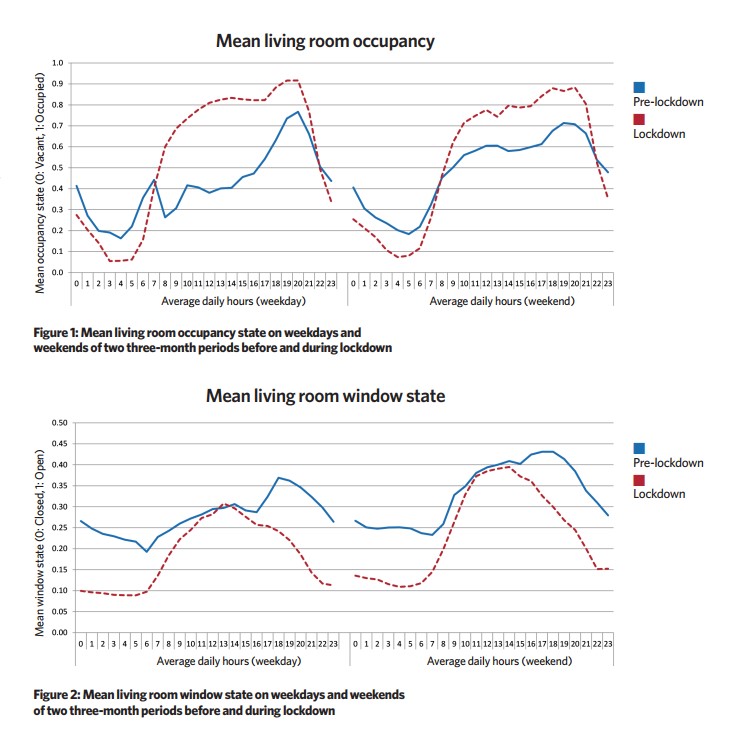
Comparing the two three-month periods, the data suggest that occupants have opened the windows less during the lockdown. While this can be partly explained by the slightly higher outdoor temperatures in the selected pre-lockdown period, the data from the fortnights around the lockdown – with very similar weather conditions – confirms the decreased level of night-time natural ventilation by occupants.
The outcome of this higher occupancy and lower natural ventilation can be seen in Figure 3, as the living room median CO2 concentration has increased by more than 200ppm at specific hours. Figure 4 also reveals that, despite lower outdoor PM10 concentrations on weekdays during lockdown, indoor PM10 concentrations have risen on weekdays, as well as on weekends.
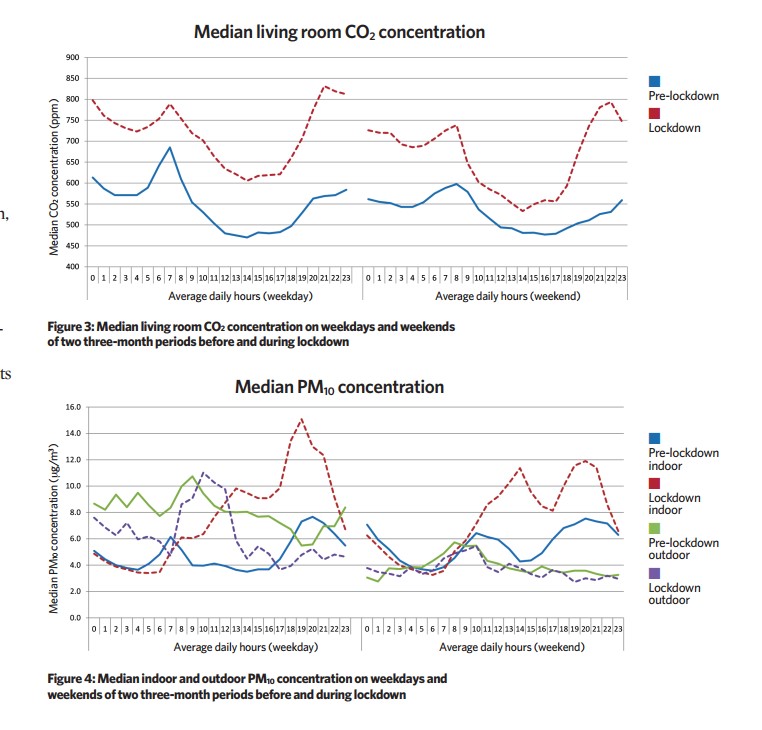
Key messages and next steps
The study indicated that, with the new home-occupancy patterns, much more attention must be paid to the detrimental health impacts of high indoor pollutant concentrations. Households must be made aware of the benefits of sufficient air-exchange rates and the environmental control possibilities to enhance IAQ. To this end, the research team will further investigate alternative energy-efficient ventilation strategies in the studied flats to maintain acceptable IAQ despite the increased occupancy hours.
INDOOR SOUNDSCAPES
Another team at UCL Institute for Environmental Design and Engineering – Prof Kang, Dr Francesco Aletta and Dr Tin Oberman – together with Prof Rossano Albatici, Simone Torresin (University of Trento) and Dr Francesco Babich (Eurac Research), are researching acoustic comfort as one of the IEQ domains, with a project entitled ‘Home as a place of rest and work: the ideal indoor soundscape during the Covid-19 pandemic and beyond’. It aims to: get insights into how the acoustic environment and building features affect or support activities performed at home; inform people’s expectations of their ideal indoor soundscape; and identify cross-cultural differences between countries.
■ The researchers at UCL Institute for Environmental Design and Engineering are Dr Farhang Tahmasebi, Elizabeth Cooper, Daniel Godoy-Shimizu, Yan Wang and Dr Samuel Stamp.



